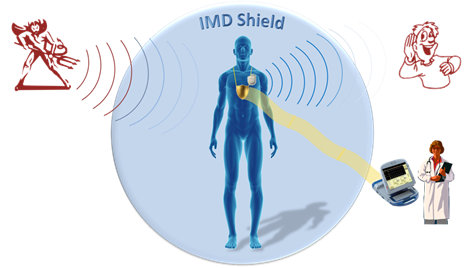Telemedicine: JAMMING MEDICAL DEVICES
Lead Institution: University of Massachusetts Amherst
Project Leader: Kevin Fu
Research Progress
-
Abstract
Current implantable medical devices (IMDs) have a vulnerable telemetry link between the device and its programmer. This project develops a novel approach to jam communication to the IMD, while still being able to have a bidirectional link to the device. -
Focus of the research/Market need for this project
Patients requiring therapy from implantable devices may suffer from privacy leaks or reprogramming attacks on unprotected communication links that otherwise require surgery to update. -
Project Aims/Goals
Improve the communication security of currently deployed devices without requiring a retrofit of the implanted device.
-
Key Conclusions/Significant Findings/Milestones reached/Deliverables
Developed and tested a proof of concept hardware/software protocol for secure interoperability between the IMD and telemedicine programmer (or monitor). Disseminated the findings to researchers known for inventing key components of the Internet.The method developed can be applicable to other devices whose wireless communication subsystem cannot be easily swapped.
Provided feedback to researchers at ETH Zurich who wish to reproduce and independently verify the results.
Medical device manufacturers now have a method to protect the communication of legacy device. It reduces the complexity of manufacturing and reduces surgical risk.
-
Materials Available for Other Investigators/interested parties
Results and experiment outline are available at the following URL:
http://groups.csail.mit.edu/netmit/IMDShield/index.html -
Market entry strategies
Intellectual property filed on medical device jamming by a medical device company. If adopted, the method will impact the FDA and FCC due to the unconventional communication method.
Bibliography
They Can Hear Your Heartbeats: Non-Invasive Security for Implantable Medical Devices (Awarded Best Paper)
Shyamnath Gollakota, Haitham Hassanieh, Benjamin Ransford, Dina Katabi, and Kevin Fu
ACM Special Interest Group on Data Communication (SIGCOMM11), August 2011
